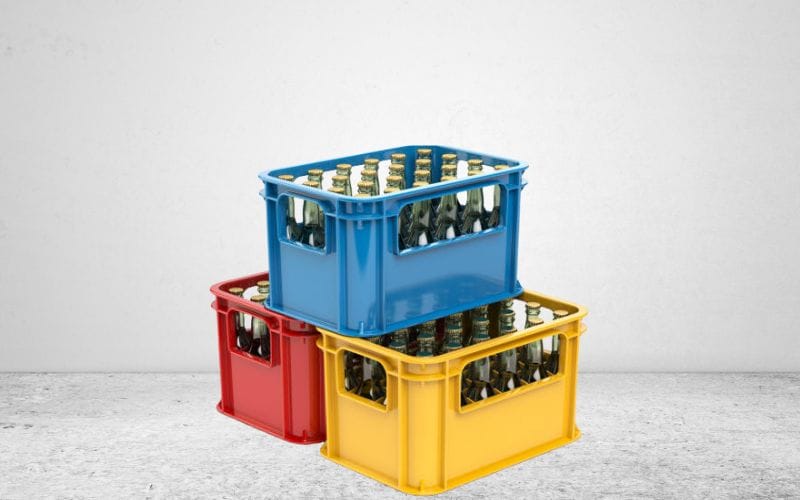Plastic vs. Glass Carets: Weighing Benefits for Everyday Use

In the realm of interior design and home decor, the choice between plastic and glass carets often poses a dilemma for homeowners. Each material brings its own set of advantages and considerations. Understanding the differences and weighing the benefits can help in making an informed decision when selecting carets for everyday use.
Understanding Plastic and Glass Carets
Composition and Properties
Plastic carets are typically made from synthetic fibers or materials such as polypropylene, nylon, or polyester. They are manufactured to mimic the look and feel of natural fibers like wool or cotton. Glass carets, on the other hand, are crafted from woven glass fibers and are known for their transparency and glossy finish.
Durability and Longevity
Plastic carets are known for their durability and resistance to wear and tear. They can withstand heavy foot traffic and are less prone to breakage compared to glass carets, making them ideal for high-traffic areas in the home.
Benefits of Plastic Carets
Affordability
One of the key advantages of plastic carets is their affordability. They are generally more budget-friendly compared to glass carets, making them a popular choice for homeowners looking to save on costs.
Versatility in Design
Plastic carets come in a wide range of colors, patterns, and textures, offering versatility in design options. This allows homeowners to easily match the caret to their existing decor and style preferences.
Ease of Maintenance
Plastic carets are relatively easy to clean and maintain. They are stain-resistant and can be cleaned using simple household cleaning products, making them ideal for households with pets or young children.
Advantages of Glass Carets
Aesthetic Appeal
Glass carets add a touch of elegance and sophistication to any space. Their glossy finish and transparent nature create a sense of openness and lightness, making them a favored choice for modern interiors.
Resilience to Stains and Scratches
Unlike plastic carets, glass carets are highly resistant to stains and scratches. They retain their pristine appearance over time, requiring minimal maintenance to keep them looking new.
Eco-Friendly Considerations
Glass carets are considered more eco-friendly compared to plastic carets. They are recyclable and can be repurposed, contributing to a sustainable approach to home decor.
Comparison of Durability
Impact Resistance
Plastic carets excel in impact resistance, making them less likely to break or shatter upon impact. This makes them a safer option for households with active lifestyles.
Wear and Tear
Glass carets, although durable, are more prone to scratches and may show signs of wear over time. They require careful handling to maintain their pristine appearance.
Environmental Impact
Recyclability
Plastic carets, depending on the type of material used, may not be easily recyclable and can contribute to environmental waste. Glass carets, being recyclable, have a lower carbon footprint.
Carbon Footprint
Glass carets have a lower carbon footprint compared to plastic carets, as they can be recycled and reused multiple times without losing their quality.
Practical Use Cases
Kitchen and Dining Areas
Plastic carets are often preferred for kitchen and dining areas due to their affordability and ease of maintenance. Glass carets can add a touch of elegance to these spaces but require more careful handling.
Living Room and Decorative Spaces
In living rooms and decorative spaces, glass carets can be a focal point, adding a sense of luxury and style. Plastic carets, however, offer practicality and budget-friendly options for these areas.
Maintenance Requirements
Cleaning Methods
Plastic carets can be cleaned using vacuuming or steam cleaning methods. Glass carets require gentle cleaning with non-abrasive solutions to maintain their shine.
Repairs and Restoration
In case of damage, plastic carets can be easily repaired or replaced at a lower cost. Glass carets may require professional restoration services to address scratches or cracks.
Safety Considerations
Slip Resistance
Plastic carets are often more slip-resistant compared to glass carets, providing added safety, especially in areas prone to moisture.
Breakage Risks
Glass carets pose a higher risk of breakage, which can be hazardous, particularly in homes with children or pets.
Cost Analysis
Initial Investment
Plastic carets are a cost-effective option for those on a budget, offering good value for money. Glass carets typically require a higher initial investment due to their premium quality.
Long-Term Value
While plastic carets are affordable upfront, glass carets may offer better long-term value due to their durability and timeless appeal.
Consumer Preferences and Trends
Market Insights
Consumer preferences often lean towards plastic carets for practicality and affordability. However, there is a growing trend towards glass carets for their aesthetic and environmental benefits.
Customer Satisfaction
Customer satisfaction varies based on individual preferences and lifestyle needs. Some prefer the affordability and ease of plastic carets, while others appreciate the elegance and durability of glass carets.
Conclusion
The choice between plastic and glass carets ultimately depends on individual preferences, budget considerations, and practical needs. Both materials have unique advantages and can enhance the aesthetics and functionality of a home.
